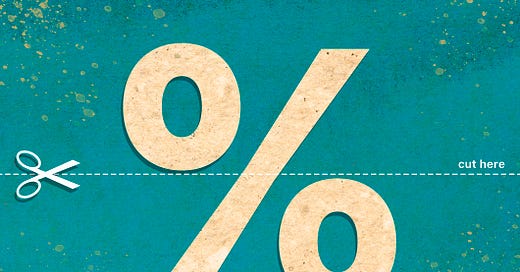The Fed should start its path back to normal in July by cutting the federal funds rate.
The progress already made on inflation justifies a first cut. Personal Consumption Expenditure (PCE) inflation is within ½ percentage point of its target, while the federal funds rate remains more than three percentage points higher than before the pandemic. The outlook for inflation and the lags in monetary policy strengthen the case further to beginning a gradual easing. The recent cooling in the labor market and the possibility of significant weakening are not necessary to justify a cut, but they are risks to consider.
True that there is no apparent urgency to cut this week—economic growth and the labor market remain strong—but that’s not a reason to wait. Good monetary policy doesn’t hold off for urgent circumstances. Good policy is forward-looking and balanced; as inflation normalizes, so should the Fed.
Here are four reasons inflation-related reasons for the Fed to be confident enough to begin cutting rates now:
The lower-than-expected inflation data since the June meeting returned to disinflation and confirmed that some of the inflation early in the year was likely due to calendar effects and one-off increases, not an underlying re-acceleration.
The monthly pace of rent of shelter inflation (tenant and owners’ equivalent) moved down to its pre-pandemic pace, which should be an important source of further disinflation in the outlook in the second half.
Wage growth—while still above the pre-pandemic pace—has moderated. A better balance between the supply of and demand for workers reduces cost pressures, reducing an upside risk to inflation.
Industry reports and the Fed’s Beige Book suggest that consumers are becoming more price-sensitive again, which limits businesses’ ability to raise prices.
Data, outlook, risk, and behavior all point to sustainable progress toward the 2% inflation target and to gradually normalizing monetary policy.
The rationale for easing is solid now. Waiting until September might bolster the case with two more months of inflation and employment data, but waiting two more months with the funds rate at 5.3% would likely come at a cost because changes in monetary policy take time to affect the ‘real economy.’ Waiting may make it harder to cut gradually and could create unwarranted urgency.
Reality check. Will the Fed cut in July? No. Will they make it sound like a September cut is as likely as markets think it is? No. I expect the FOMC statement at 2 pm ET to be read as hawkish, and then Powell will soften the blow some in the press conference. Even so, some hawkish aftertaste will probably remain. Why?
The Fed is not confident about inflation. They want more data. The bar for “confidence” is high, and some hurdles, like ‘base effects’ in inflation, may make it harder to build more confidence in the data in the second half.
The Fed does not want to appear weak on inflation, or to cut on concerns about the labor market. No one wants to be Arthur Burns. The Fed’s test of “significant deterioration in the labor market” is likely significantly weaker than outsiders.’
The markets have more than fully priced in a 25 basis point rate cut in September. While that’s not where the Fed’s thinking likely is, they have no reason to push back the market view tomorrow aggressively. It is close enough, and the data can do the work if necessary.
The Fed is missing an opportunity to cut that rests credibly on disinflation. It wants more data. It even seems to want urgency to force a move. It might get it, but that would be unfortunate.
The rest of today’s post below the paywall uses a recent speech by Governor Waller to flesh out the “reality check” of data necessary for a rate cut in September and offers some thoughts on what to watch in the FOMC statement.








